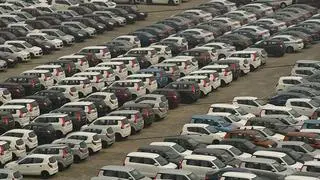Faced with rising power costs and uncertainty over supply, cement companies have been investing in captive power plants. The cement industry now has nearly 4,000 MW of installed captive power capacity, including coal-based plants, diesel generating sets and wind turbines.
Electricity costs account for nearly a third of the variable cost of producing cement, according to Mr A.V. Dharmakrishnan, Chief Executive Officer, Madras Cements Ltd. By putting up captive power plants, cement companies hope to control this cost to the extent possible.
More than the saving on power costs, captive power plants ensure that the cement companies get uninterrupted power supply.
Some companies, such as Madras Cements, have put up captive power plants to take care of all their electricity requirements, while for others, such as ACC Ltd, captive power meets 72 per cent of its requirement. As the cement companies expand their manufacturing capacity, they will simultaneously invest in captive power plants, sourcing coal even through imports. A million-tonne cement plant will require about 20 MW of power capacity, according to industry sources.
Units per tonne
According to the Cement Manufacturers' Association, modern cement plants consume 68-93 units to produce a tonne of cement while the older ones use up 100-120 units.
For most cement companies, power produced from coal-based captive plants is cheaper by up to Rs 2.50 a unit, giving them a huge saving in production cost.
ACC's average cost of electricity from its captive plants is Rs 3.72 a kWh, against Rs 4.86 for grid power.
Using diesel generating sets pushes up the electricity cost to nearly Rs 13-15 a unit now. Hence, most companies prefer to keep their diesel generating sets idle.
According to ACC's 2011 annual report, power and fuel accounted for 22 per cent of total income against 20 per cent the previous year. ACC has also installed 27 kW of solar photovoltaic panels at its corporate office and at two other facilities.
Besides captive coal-based power plants, the cement companies are also generating electricity using the waste heat recovered. India Cements has an 8 MW waste heat recovery plant, while ACC is implementing one to generating 7.3 MW based on waste heat recovery.
Costly grid power
Ambuja Cements has said in its 2011 annual report that the cost of grid power increased 14 per cent per kWh year on year. More power requirements were met from grid power in view of relatively costlier coal-based power, resulting in a 62 per cent increase in the variable portion of grid power costs over that of 2010. Its captive power generation accounted for around 70 per cent of total power requirement in 2011, over close to 80 per cent in the previous year.
(ACC and Ambuja Cements, both Holcim group companies follow the January to December financial year.)








Comments
Comments have to be in English, and in full sentences. They cannot be abusive or personal. Please abide by our community guidelines for posting your comments.
We have migrated to a new commenting platform. If you are already a registered user of TheHindu Businessline and logged in, you may continue to engage with our articles. If you do not have an account please register and login to post comments. Users can access their older comments by logging into their accounts on Vuukle.